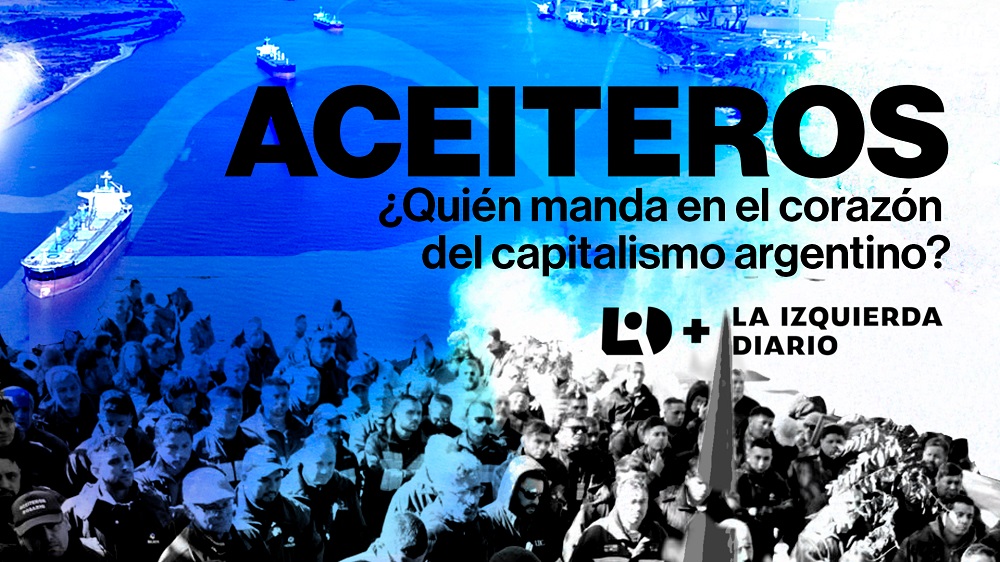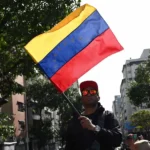
From the route to the river, passing through the large oil companies and their private ports, we find the most powerful oil complex in the world. It is one thing to have read it, another is to get inside the monster. It is one thing to listen to the shocking numbers of exports or the controversies over the “liquidation of foreign currency”, another is to approach that circuit that unites soybean fields, mega plants that put their tentacles in the Paraná and reach the Chicago Stock Exchange, where end up deciding how much it costs you to eat.
If one is guided by the signs in front of the factories, there is no doubt who owns the green gold. The logos of Cargill, Dreyfus, Bunge, Cofco make it clear. Just in case, messages are also written in English, French or Chinese.
The data we had written down before leaving became an impressive scene.
But at the same moment we began the tour, the giant knelt down. The business chamber threw in the towel above the ring. “We ask you to reconsider,” cried its spokesperson before the national media. There were 7 days of stranded boats, parked trucks, empty beaches, silent machines. An oil delegate responded to him. “They play with our needs but it hurts them not to be able to produce. The strike shows who generates the wealth.”
We had to go back to the original question. Who’s in charge?
*
The route between the Cargill megaport in Villa Gobernador Gálvez and the Renova plant in Timbúes takes almost 70 kilometers. It is an extraordinary summary of capitalist irrationality.
At every step, a contrast.
On the one hand, the modern Renova plant, which boasts of having the largest crushing capacity in the world. It can process 38 thousand tons in just one day. On the other, the precarious settlement of fishing families. A man rows to shore. Before getting off the boat, count shad and dorado. He complains about the grain dust and waves before entering the bush.
On one side, the luxurious buildings of Puerto Norte. When the sun goes down, people go into the gyms overlooking the river or go jogging along the Rosario waterfront. On the other hand, on the same evening, thousands enter their neighborhoods and villages after working all day for two mangoes. Even if they do not follow Indec, they have known for some time with certainty that poverty does not stop growing.
On the one hand, the striking oil workers discuss whether to accept mandatory conciliation while they cook. The chroniclers can attest that there they eat the best choripanes and the best rice with chicken in the area. On the other, the girls finish arranging the banquet that will be served at the celebrations of the 140 years of the Rosario Stock Exchange. Seafood, canapés and champagne. Today Milei comes.
The LID + team arrives at the Stock Exchange to learn about the other campaign. The security personnel does not want to know anything about the visit. They promise an interview later. Instead of the spokesperson appearing, more men in black gather at the door.
*

The oil delegates take time to chat. Why is the strike? Why is the basic salary for you one and a half million pesos? What are those “9 needs” that you talk about? When did you start with this? How do you see the CGT? And to the country?
Sometimes we feel that a piece of information, an interview, brings us closer to the answer. “This is what generates the strike. Workers’ power is represented here. “We are the ones who produce the wealth and the ones who produce the profits,” says one, in the middle of a beach where pigeons replaced trucks. “The strike is to make them understand that wealth is generated by the workers, with the power of their work,” says another. A “grassroots” worker wants to speak in front of the camera. “Without a cleaning partner, the machines get stuck due to dust. But even if all the bosses come, it can’t work. Without us it doesn’t work.”

The talks leave threads that must be pulled, followed. A journalist who has a good background in “agribusiness” helps us understand the dimension of the business, how grains mix with finances, the affections of soybean growers for the different governments. Fact kills story.
Other talks “send us” to review the files. The historic strike of 2015, which lasted 25 days. That of 2020, which lasted all of December and ended after Christmas.
“The important thing is that everything is recorded in the memory of each colleague,” says an oilman. That memory helps to broaden the focus and understand everything. Or almost.
*
With these testimonies, the archive, the investigations, we put together the chronicle. There is a lot of material. You have to cut and then rebuild. What is the phrase that best explains the strike? Who best tells how they are organized? How do we explain what “strategic positions” are? How to convey the hatred generated by those contrasts, those banquets alongside so much hunger? How do we add our opinion?
And other discussions: how to make the images, the phrases, the story, the music, trap you in that story, in those debates. Romeo Guerra adds cinema to it.

In the middle of the edition, the Santa Fe police take one of the protagonists of our story to prison. Teacher Franco Casasola, delegate of the teaching union and PTS activist, is persecuted along with other representatives of ATE and AMSAFE for mobilizing against Governor Pullaro’s adjustment.
The oil growers give us another reason to continue the report: they stop the plants for the freedom of political prisoners and against the criminalization of protest.
*
Let’s cut here. Because the answer to that question is in the video. It’s an open answer, it’s true. The general strike shows who moves this giant and who can paralyze it. But it doesn’t resolve the discussion. The reality of Gran Rosario is there like a painful slap in the face to remind us of the enormous social and political power of the large cereal companies.
And the answer also opens up other questions. How to use those forces, those strategic positions, to infect other sectors? How can the oil triumph help unite all those who are hit by the economic plan, until it is completely defeated? How can we end the hunger of our childhoods and ensure that all working people can access, at a minimum, those “9 needs”?
That is perhaps the main objective of this material. Not only show the workers’ struggles or give a voice to those who challenge such power. From La Izquierda Diario, from the PTS, we want it to serve to nourish the debate about the potential of the working class.
The only one that, just as the world moves, can put an emergency brake on the barbarism to which the capitalists are leading us. And the one that can reorganize the country and the world, from below, so that this giant, that technology, those foods, are at the service of all humanity.

Director: Romeo Guerra, Lucho Aguilar, Javier Brat, Facundo Durán, Lucho Lucero
Edition: Romeo Guerra
Camera: Javier Brat
Drone: Manu Carames Habichayn and Martín Cossarini
Sound: Andrés Perugini and Matías Galli
Image archive: Oil Federation, La Izquierda Diario
Thanks: to the militancy of the oil union, to the fishermen of Gálvez, to Dolores Contreras and all those who contribute to bringing this story to light
Interviewed: Mariano Galíndez, Daniel Yofra, Martin Morales, Marco Pozzi, Carlos Valles, Franco Casasola, Octavio Crivaro.
Source: www.laizquierdadiario.com

